Below you can read a brief summary of the topic covered in each of the modules.
- Introduction
 This introduction provides a broad overview of the various modules (topics) in this resource. It emphasizes the wide diversity of topics covered in this resource and looks at the subject area interrelationships. It is recommended that users of this resource view this introductory module before watching the other modules that cover specific areas within forestry and natural resource conservation.
This introduction provides a broad overview of the various modules (topics) in this resource. It emphasizes the wide diversity of topics covered in this resource and looks at the subject area interrelationships. It is recommended that users of this resource view this introductory module before watching the other modules that cover specific areas within forestry and natural resource conservation.
View Module - Bioenergy and Biofuels
 Biomass is an increasingly important renewable energy source that has the potential to reduce dependence on hydrocarbon-based energy sources. This module presents an overview of the use of biomass to produce bioenergy with particular emphasis on bioethanol, and an explanation of the main steps in producing ethanol from wood.
Biomass is an increasingly important renewable energy source that has the potential to reduce dependence on hydrocarbon-based energy sources. This module presents an overview of the use of biomass to produce bioenergy with particular emphasis on bioethanol, and an explanation of the main steps in producing ethanol from wood.
View Module - Business Fundamentals
 The importance of high level business concepts, like strategic management, corporate responsibility and marketing, are examined in the context of the forest products industry.
The importance of high level business concepts, like strategic management, corporate responsibility and marketing, are examined in the context of the forest products industry.
View Module - Climate Change and Visualization
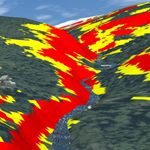 Visualization is an effective tool that can used to communicate potential outcomes of actions taken to mitigate or adapt to the projected effects of climate change.
Visualization is an effective tool that can used to communicate potential outcomes of actions taken to mitigate or adapt to the projected effects of climate change.
View Module - Conservation Science
 Conservation scientists help to inform decisions on species and ecosystem protection, and their restoration. With climate change having wide-spread impacts on every ecosystem on earth, conservation science assists us to evaluate these impacts and form management plans to address the changing needs of species and ecosystems at risk.
Conservation scientists help to inform decisions on species and ecosystem protection, and their restoration. With climate change having wide-spread impacts on every ecosystem on earth, conservation science assists us to evaluate these impacts and form management plans to address the changing needs of species and ecosystems at risk.
View Module - Developing Markets for Wood Products
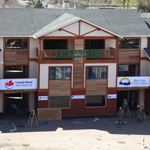 China and British Columbia are working together to introduce wood frame building systems that will significantly reduce energy consumption and carbon emissions in China.
China and British Columbia are working together to introduce wood frame building systems that will significantly reduce energy consumption and carbon emissions in China.
View Module - Engineered Wood Products
 Wood is a natural, biological material; wood products made from solid pieces of the same species have inherent property differences that can be problematic. Engineered composite wood products are manufactured so as to attempt to reduce this variability.
Wood is a natural, biological material; wood products made from solid pieces of the same species have inherent property differences that can be problematic. Engineered composite wood products are manufactured so as to attempt to reduce this variability.
View Module - Forest Ecology
 Application of a thorough understanding of the properties and processes of a forest ecosystem is key to the sustainable management of that forest. This module provides an overview of these basic concepts, and describes how these concepts can be applied in the management of forests as complex adaptive systems.
Application of a thorough understanding of the properties and processes of a forest ecosystem is key to the sustainable management of that forest. This module provides an overview of these basic concepts, and describes how these concepts can be applied in the management of forests as complex adaptive systems.
View Module - Forest Entomology
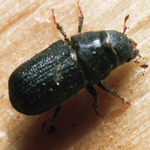 Forest disturbance arising from insect attack is a critical component of forest health. This module discusses the concept of forest health and categorizes the groups of insects in relation to the injury that they inflict on all the various parts of trees and the overall forest.
Forest disturbance arising from insect attack is a critical component of forest health. This module discusses the concept of forest health and categorizes the groups of insects in relation to the injury that they inflict on all the various parts of trees and the overall forest.
View Module - Forest Genetics
 Many facets of biology affect the tree improvement delivery system through both their independent and integrated roles. Although it is relatively easy to dissect a system to its small components, the reality is that the system is an integrated entity and, as such, the whole does not equal the sum of all its parts.
Many facets of biology affect the tree improvement delivery system through both their independent and integrated roles. Although it is relatively easy to dissect a system to its small components, the reality is that the system is an integrated entity and, as such, the whole does not equal the sum of all its parts.
View Module - Forest Management
 Numerous aspects need to be considered in forest management; this complexity means that the management is adaptive and planning is continuous. This module describes the resource inventories and land use priorities necessary for planning, shows how landbase productivity is determined, and explains the necessity of knowing the desired range of products from the forest as related to treatment regimes needed to achieve these goals.
Numerous aspects need to be considered in forest management; this complexity means that the management is adaptive and planning is continuous. This module describes the resource inventories and land use priorities necessary for planning, shows how landbase productivity is determined, and explains the necessity of knowing the desired range of products from the forest as related to treatment regimes needed to achieve these goals.
View Module - Forest Measurements and Biometrics
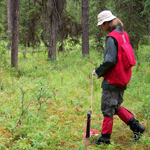 Decision-making in resource management requires accurate information obtained using best practices. This module examines some of the principles and procedures of gathering, storing, analyzing, displaying and reporting land information particularly for forest environments.
Decision-making in resource management requires accurate information obtained using best practices. This module examines some of the principles and procedures of gathering, storing, analyzing, displaying and reporting land information particularly for forest environments.
View Module - Forest Pathology
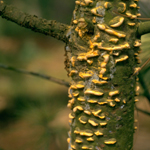 Forest pathogens are a natural part of the environment and diseases caused by these pathogens can be beneficial as well as destructive to the forest as a whole. Starting from the basis of “forest health”, this module presents an overview of the various categories of forest pathogens, as well as stand and tree level symptoms of various pathogens.
Forest pathogens are a natural part of the environment and diseases caused by these pathogens can be beneficial as well as destructive to the forest as a whole. Starting from the basis of “forest health”, this module presents an overview of the various categories of forest pathogens, as well as stand and tree level symptoms of various pathogens.
View Module - Forest Stand Dynamics and Modeling
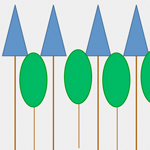 Plants, like all living things, grow and change over time. For forests, the time frames are considerably longer than those for many other plants.This module examines how growth and change takes place in spatially continuous groups of trees called forest stands. It explains how the number and size of trees in various types of stands develop over time and describes how stand development, in terms of growth and yield, can be predicted through modeling.
Plants, like all living things, grow and change over time. For forests, the time frames are considerably longer than those for many other plants.This module examines how growth and change takes place in spatially continuous groups of trees called forest stands. It explains how the number and size of trees in various types of stands develop over time and describes how stand development, in terms of growth and yield, can be predicted through modeling.
View Module - Geographic Information Systems
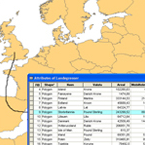 GIS is the bringing together of spatial information with tabular data. Its uses, through data geoprocessing to address particular problems, are multiple. This module presents many examples of forestry applications, and details how GIS allows for better integrated management of various forest-related resources such as timber, biodiversity, water etc. with other social-related uses such as scenic beauty for tourism.
GIS is the bringing together of spatial information with tabular data. Its uses, through data geoprocessing to address particular problems, are multiple. This module presents many examples of forestry applications, and details how GIS allows for better integrated management of various forest-related resources such as timber, biodiversity, water etc. with other social-related uses such as scenic beauty for tourism.
View Module - Global Issues
 Many of the environmental, economic and social aspects of forests function across borders: forests are of global concern. This module describes the situation of forest cover at the global level, programs that operate at the inter-country and global level, and the main international players involved in these programs.
Many of the environmental, economic and social aspects of forests function across borders: forests are of global concern. This module describes the situation of forest cover at the global level, programs that operate at the inter-country and global level, and the main international players involved in these programs.
View Module - Global Wood Trade
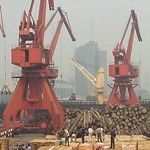 Wood products produced in British Columbia are exported to many regions of the world. This module explains the basics of the global economy and trade, describes supply and trade of various groups of wood-related products, and examines the growing importance of China in global wood trade.
Wood products produced in British Columbia are exported to many regions of the world. This module explains the basics of the global economy and trade, describes supply and trade of various groups of wood-related products, and examines the growing importance of China in global wood trade.
View Module - Remote Sensing
 This module provides an overview of the use of satellite and airborne remote sensing imagery in forestry and conservation, and some interesting and novel applications.
This module provides an overview of the use of satellite and airborne remote sensing imagery in forestry and conservation, and some interesting and novel applications.
View Module - Supply Chain Management
 Planning and modeling of the materials flow from the forest to final product helps maximize the total value generated. This module presents basic information about the forest products industry in Canada,
explains supply chain management and forest products supply chain, and discusses issues and trends related to supply chain modeling.
Planning and modeling of the materials flow from the forest to final product helps maximize the total value generated. This module presents basic information about the forest products industry in Canada,
explains supply chain management and forest products supply chain, and discusses issues and trends related to supply chain modeling.
View Module - Sustainability and Forestry
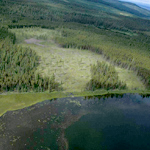 How do we meet an expanding global demand for wood, in a sustainable way, from a shrinking forest land base? This module examines the challenges of and opportunities for sustainable forest management in both natural and planted forests, and presents numerous examples from around the world that illustrate both the environmental concerns and specific options for sustainable forest management practices.
How do we meet an expanding global demand for wood, in a sustainable way, from a shrinking forest land base? This module examines the challenges of and opportunities for sustainable forest management in both natural and planted forests, and presents numerous examples from around the world that illustrate both the environmental concerns and specific options for sustainable forest management practices.
View Module
